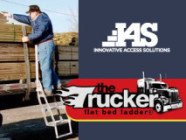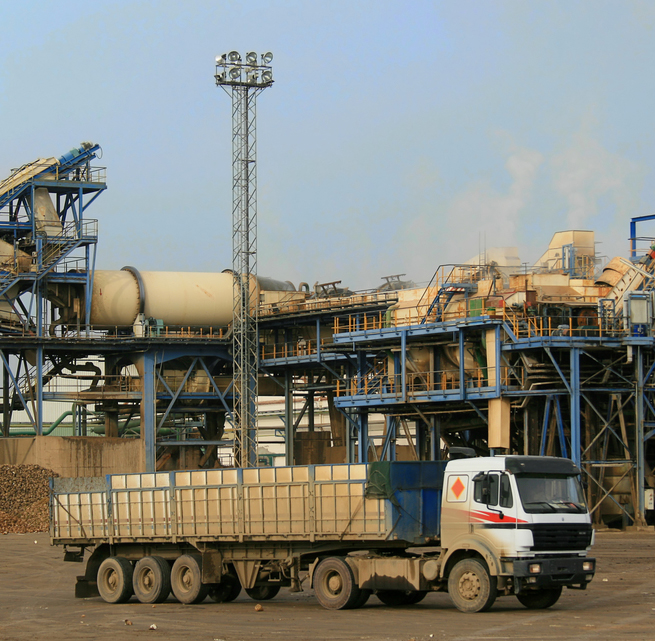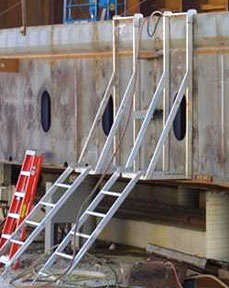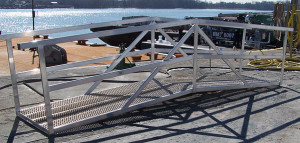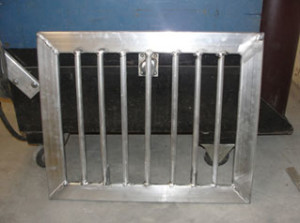The Trucker™ Series of ladders was recently tested and passed ANSI Type IAA Special Duty performance requirements. ANSI (American National Standards Institute) standard A14.7-2007 applies to portable metal ladders and provides duty ratings from 200 to 375 pound capacity. Type IAA is the maximum 375 lb. duty rating, described as an Extra Heavy Duty Industrial Ladder.
The Trucker™ Series of ladders are safety engineered to reduce fall injuries and improve efficiency when accessing truck trailer decks. The Trucker ladders provide dimpled Wide Grip Strut® plank steps, feature handrails that extend above the deck to provide 3 points of contact, and are engineered with a diagonal stairway design for ease of access. The ladders meet and exceed the general requirements provided by OSHA for ladder safety:
When there is a break in elevation of 19 inches(48 cm) or more and no ramp, runway, embankment or personnel hoist is available, employers must provide a stairway or ladder at all worker points of access.
Source: Stairways & Ladders: A Guide to OSHA Rules

ANSI A14.7-2007 Testing Procedures
The Trucker™ ladders underwent tests far exceeding the duty rating, passing test loads in excess of 1200 lbs. to meet the requirements of the 375 pound special duty rating. Tests included In-Use Inclined Load Test, Step / Rung Bending Strength Tests, Side-to-Side-Rail Shear Strength Tests, Rung Torque Tests, and Handrail Tests. With a durable design including CNC billet mounting hooks and extruded aluminum frame, The Trucker Series of Ladders offer the durability to provide mobile safety for truck fleets, stationary trailers, or individual truck drivers when accessing the trailer deck.
The Trucker™ Series of Ladders
The Trucker™ ladders are designed to mount to a variety of flatbed trailers including drop deck, roll tarp, curtain side, and more. The Trucker Series of ladders feature plank steps and a pivoting bottom step, and fold up compactly for storage and mobility. Additional ANSI rated Trucker ladders include a shorter two step ladder and longer four step ladder, originally designed for crane trucks. Mounting options include the standard CNC mounting hooks, for mounting throughout the stake rack, or steel brackets for more permanent ladder placement.
The Safety & Numbers blog is pleased to highlight The Trucker™ Series of ladders as a valuable equipment investment for businesses to improve work safety. Trucker ladders provide features designed for the mobile truck driver or service fleet. In addition to the compact design, lockable storage racks and accompanying flatbed work platforms can provide safety on and off the work site.
